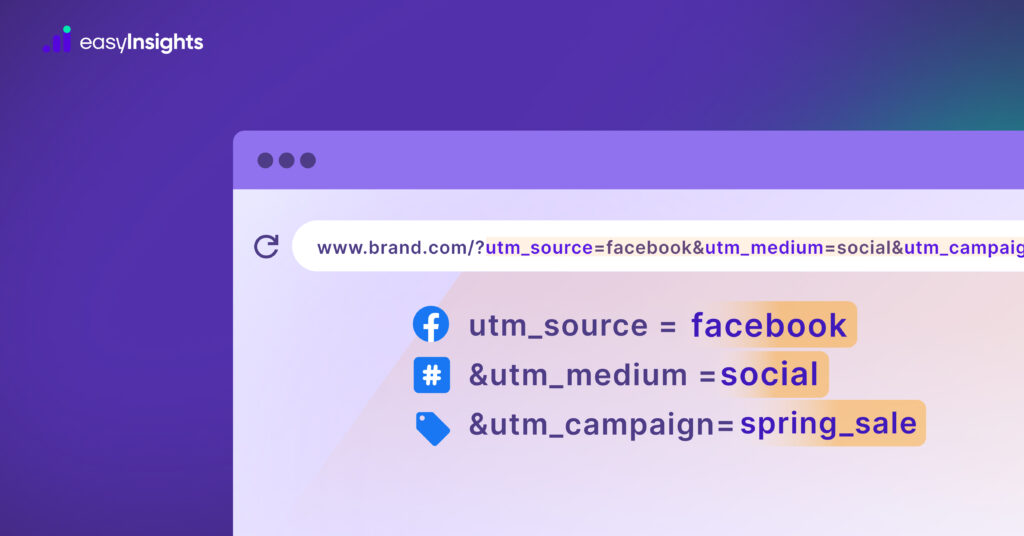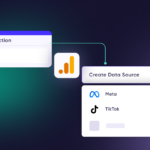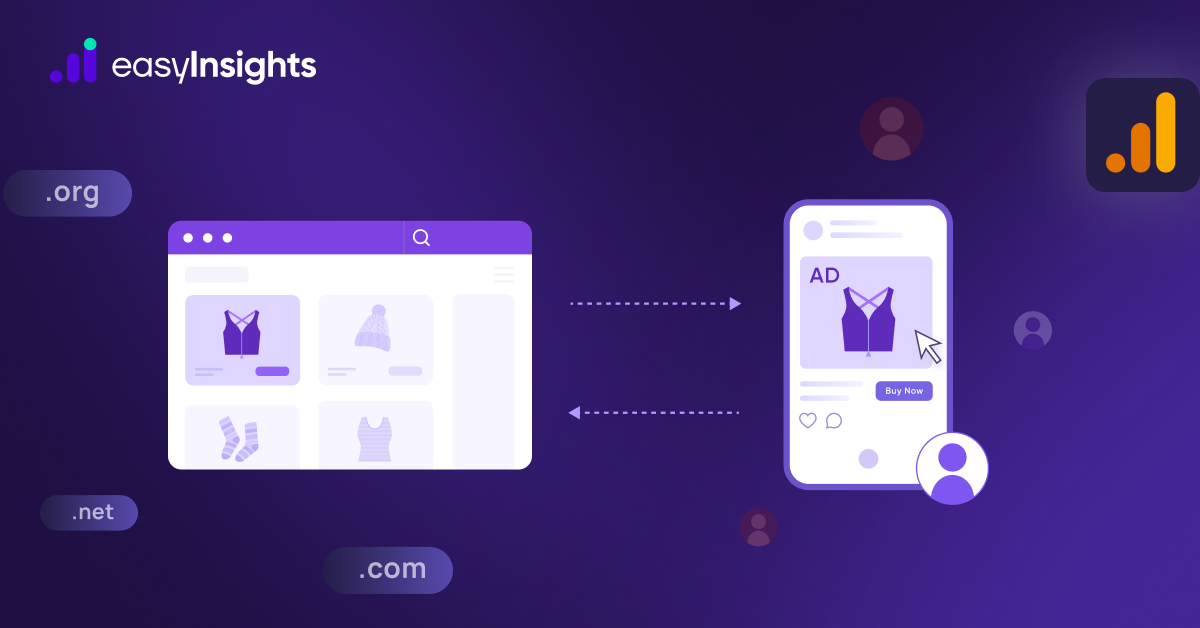
Imagine you just launched a series of email campaigns promoting your new product line. The subject lines are catchy, the visuals are engaging, and clicks start pouring in. By the end of the week, your dashboard shows a noticeable jump in website visits and a few new sign-ups.
But here’s the catch – you have no clear idea which email drove those results. Was it the Monday blast, the follow-up on Wednesday, or maybe even your latest Instagram post that got shared widely? Without proper tracking, all that data feels like a mystery.
Enter UTM parameters – the unsung heroes of campaign tracking. By adding these simple tags to your links, you can pinpoint exactly where your visitors are coming from and which pieces of content are performing best. Suddenly, guesswork turns into actionable insights.
In this blog, we will dive into how to effectively use UTM parameters to track, measure, and improve your campaign performance, so every click counts.
Jump ahead to:
What Are UTM Parameters
UTM parameters – short for Urchin Tracking Module codes – are small text tags appended to the end of a URL. These tags allow marketers to track exactly where website traffic comes from and how each marketing effort performs.
By adding UTMs to your links, you can answer essential questions such as:
- Which campaign drove this visitor?
- Which platform or social network sent the traffic?
- What marketing channel or content type was most effective?
When someone clicks a UTM-tagged link, tools like Google Analytics, EasyInsights, or other analytics platforms capture this information, giving you detailed insights into the source, medium, campaign, and content that brought the user to your site.
In short, UTM parameters turn every link into a tracking tool, helping you measure campaign performance accurately, optimize your marketing strategy, and make data-driven decisions instead of guessing.
Here’s an example of an URL with UTM parameters:
www.example.com/?utm_source=facebook&utm_medium=social&utm_campaign=spring_sae
In this link:
- utm_source=facebook tells you the traffic came from Facebook
- utm_medium=social identifies the channel type (social media)
- utm_campaign=spring_sale ties it to a specific marketing campaign (spring sale)
Why UTM Parameters Are Crucial for Marketers
In today’s multi-channel marketing world, it’s easy to feel like you’re throwing campaigns into the void. You run social ads, send emails, publish blog posts, and launch paid search campaigns – but how do you know which ones are actually driving traffic, leads, or sales?
This is where UTM tracking becomes a game-changer. By adding UTM parameters to your URLs, you gain full visibility into the performance of every campaign, allowing you to make smarter, data-driven decisions. Here’s why UTMs are indispensable for any marketing strategy:
1. Precise Attribution
UTMs give you detailed information about exactly which campaign, platform, or creative generated each click, lead, or conversion. Rather than relying on vague reports from ad platforms or last-click models, UTMs allow you to see the true source of traffic and performance.
2. Smarter Budget Allocation
When you know which campaigns are delivering the best results, you can allocate your marketing budget efficiently. Spend more on channels that bring high ROI and reduce investment in campaigns that underperform – all with confidence.
3. Deeper Insights and Reporting
UTM tracking provides granular analytics. You can break down metrics by source, medium, campaign, content, or even individual creatives. This level of detail turns raw data into actionable insights, helping you optimize messaging, creative formats, and channel strategies.
4. Data-Driven Decisions Across Channels
From email marketing and social ads to paid search and influencer campaigns, UTMs unify performance tracking across all platforms. This ensures you’re making decisions based on accurate, comprehensive data, not guesswork.
UTMs give marketers control over their campaigns, unlock deep insights, and make it possible to measure, optimize, and scale marketing performance effectively.
Also Read: Marketing Attribution for B2B – All You Need to Know
How to Create UTM Parameters
Adding UTM parameters to your links might sound technical, but it’s actually quite simple – and doing it right ensures your marketing data stays accurate and useful. Here’s a step-by-step guide:
Step 1: Set Up a Consistent Naming System
Before creating your UTMs, decide on a clear structure for names.
- Use lowercase consistently (facebook not Facebook).
- Decide on a standard format for campaign names (summer_sale_2025).
- Keep a simple structure for sources and mediums (email, social, cpc).
Having a consistent naming system prevents messy reports and makes it easy to compare campaigns later.
Step 2: Use a UTM Link Generator
You don’t need to manually write these URLs. Tools like Google’s Campaign URL Builder can do it for you.
- Enter your website link.
- Fill in the fields for source, medium, campaign, and optionally content or term.
- The tool will automatically create a ready-to-use URL with UTMs attached.
Some marketing platforms, like EasyInsights, can even generate and track UTMs automatically across all your campaigns.
Step 3: Add UTM Links to Your Campaigns
Once your UTM link is ready, use it wherever you share your campaign:
- Social media posts or ads
- Email newsletters or promotions
- Blog posts or referral links
This way, every click can be traced back to the right campaign, platform, and content.
Step 4: Test Before You Publish
Always check your links before going live.
- Click the URL to make sure it opens the correct page.
- Verify that your analytics tool is recording the parameters properly.
Testing ensures your tracking works and avoids gaps in data later.
By following these steps, every link you share becomes a tracking tool, helping you see exactly what’s driving traffic, leads, or sales.
Also Read: How to use server side tracking for better conversion tracking
Common UTM Tracking Mistakes
UTM parameters are easy to use, but even small errors can create messy data and misleading reports. Here are some common mistakes marketers make – and how to avoid them:
1. Inconsistent Naming
Using variations like Facebook, or FB, for the same traffic source will split your data in analytics, making it hard to get a clear picture.
2. Forgetting to Tag All Links
Many marketers only add UTMs to paid ads but skip organic posts, emails, or partnership links.
3. Overcomplicating Links
Some marketers add too many unnecessary parameters or long, complicated names. This can confuse analytics reports and make links look messy.
4. Losing UTMs Through Redirects
Certain redirects, URL shorteners, or tracking systems can remove UTMs, breaking your data chain.
Also Read: Understanding the Last-Click Attribution Model: Pros, Cons, and Best Practices
Best Practices for UTM Tracking
Adding UTMs is just the start. To make your tracking truly useful, follow these best practices:
1. Create a Standard Naming System
Document a clear structure for all UTMs: sources, mediums, campaigns, and content. This prevents confusion and keeps data consistent across your team.
2. Stick to Lowercase and Simple Names
UTM codes are case-sensitive. Always use lowercase and readable terms (utm_source=linkedin, not LinkedIn-Ads) to keep reports clean.
3. Tag Every Link
From paid ads to organic posts, emails, influencer links, and partnerships – track them all. Full coverage ensures you understand exactly which campaigns drive results.
4. Centralize Your UTM Data
Maintain a shared spreadsheet or use a tracking tool to record all UTM links and naming conventions. This keeps everyone aligned, avoids duplication, and prevents errors.
5. Test Links Before Launch
Always click through your tagged URLs and verify they are recorded correctly in your analytics platform. A quick test saves hours of troubleshooting later.
Following these guidelines ensures your UTM tracking stays accurate, organized, and actionable, giving you a clear view of which marketing efforts are truly performing.
How EasyInsights Simplifies Conversion Tracking
While manual UTM tagging works, managing hundreds of campaign links across different platforms can quickly become chaotic. That’s where EasyInsights steps in.
You can track user actions from the initial click to a purchase or lead submission, but that data is often incomplete or inaccurate when relying solely on pixel-based tracking. To truly scale your business, you need precise data and full visibility into what happens both before and after a conversion.
That’s where EasyInsights makes the difference. With EasyInsights’ advanced cross-domain tracking, you get accurate, end-to-end insights – not just pre-conversion behavior, but also critical post-conversion data that helps optimize campaigns, improve attribution, and drive real growth. such as:
Track the entire customer journey from first click to lifetime value
Cross-platform user behavior: Connect interactions across domains and device
Accurate attribution models: Attribute revenue to the right channels with confidence
Repeat purchases: Understand customer retention and repurchase behavior
Subscription renewals: Track recurring revenue events across platforms
Upsells and cross-sells: Identify high-value actions beyond the initial conversion
Improved campaign optimization: Feed complete data back into ad platforms for better automated bidding
Conclusion
UTM parameters are a small addition to your URLs, but their impact on marketing performance tracking is huge. They give you the ability to measure traffic sources, track campaign performance, and optimize ROI across every marketing channel – from social media and email to paid search and influencer campaigns.
When used consistently, UTMs eliminate guesswork, provide accurate attribution, and deliver granular insights that help marketers make smarter, data-driven decisions.
Platforms like EasyInsights take UTM tracking to the next level by automating link tagging, unifying data from multiple channels. This allows you to not only track performance in real-time but also identify top-performing campaigns and creatives faster, so you can allocate budget efficiently and scale marketing efforts with confidence.
Get a unified view of all your UTM data – Book a demo with EasyInsights








